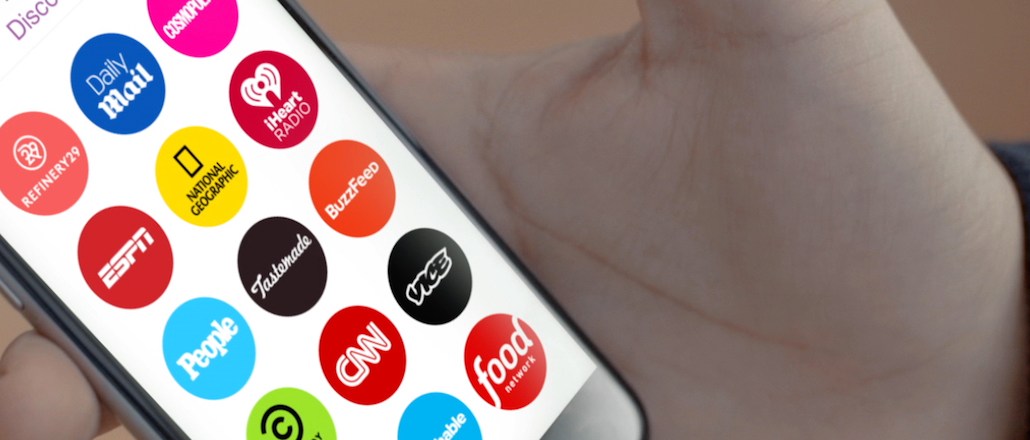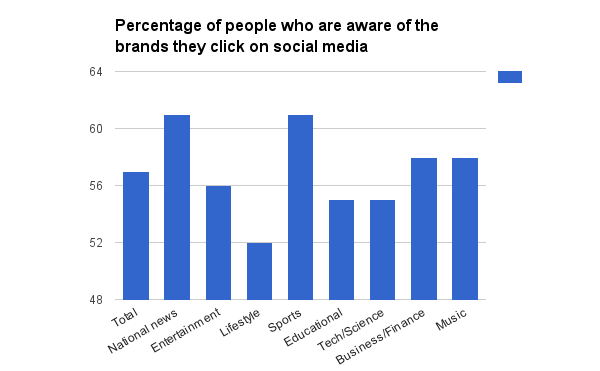43 percent of social media users don’t know where the stories they read originally appeared

With publishers under pressure to distribute their content straight to social media platforms, the nagging question for many of them is what impact this has on their brands. As people flick through their feeds, do they even know who the host publisher is of the headlines that blur by them?
New research from Digital Content Next, a trade association for premium publishers, found that most of the time (57 percent), people are aware of which title they’re clicking on when they’re reading on social media. That means fully 43 percent aren’t aware of the publisher behind the story they’re reading, though. The data wasn’t broken down by platform (Facebook, Twitter, etc.)
This suggests publishers that are already well established have an advantage on social media. Jason Kint, CEO of DCN, said the finding is good news for his members.
“At least more than half the time, they’re seeking out brands they trust and know,” he said. “The trust of the brand is critical as to whether they click on content.”
New brands, too, are quickly able to build trust by delivering new experiences, he said. “The ones that are hurt are the ones that use evergreen content, the content farms, the click-baiters.”
Also less advantaged: smaller publishers with fewer resources to experiment with Facebook, which plays a big part in determining what people see in their feeds. Right now, for example, it’s all about video, which even for big, well-funded publishers is expensive and hard to do well.
The brand awareness also isn’t spread evenly by subject category. National news and sports had the highest recognition, with 61 percent of respondents saying they were aware of the brands they were reading. Lifestyle news, perhaps because its content can often feel evergreen, was the lowest, 52 percent. Within those categories is a range of publishers, though, and their recognition could vary widely on an individual basis.

Forty percent said they would click on content from unfamiliar sites, which suggests social media can play a role in getting people to discover publishers. It’s noteworthy that among people aged 12-19, only 19 percent said they would click on unfamiliar content, though, contrary to the common perception that young people aren’t as brand loyal as their older counterparts.
Publishers are rightly concerned that as people spend more time on social media, they’ll be less likely to visit the publishers’ own sites, where they can control the user experience, gather data on readers and fully monetize them. DCN found that people’s online reading is nearly equally split between publishers’ sites or apps (35 percent), search engines (31 percent) and social media (34 percent). Social media has an opportunity to drive discovery, though; 69 percent said after reading a story on social media, they’d be likely to visit the publisher’s site.
The research also had some interesting findings on Snapchat’s Discover section for publishers, which launched last year and has been a big draw for publishers wanting to capitalize on the app’s popularity with young readers. The DCN research also showed that people were more likely to read content if it’s on Snapchat Discover than Facebook Instant or Twitter Moments. It also found that Snapchat Discover has the most staying power, followed by Facebook. When using Snapchat Discover, 32 percent said they spent 20 minutes or more on stories, followed by 28 percent for Facebook Instant Articles readers.
DCN did the quantitative research report with Magid Research and looked at the impact of social distribution on publishers’ brands as well as consumer demand for publishers’ content on various social media outlets. DCN and Magid Research conducted the online study in March 2016 with 1,000 U.S. respondents aged 12 to 54 with a home internet connection. Called the 2016 DCN Content Distribution Impact Research, it’s available to DCN members only.
More in Media

Digiday+ Research: Publishers take their focus off events as revenue dips
The percentage of publishers making money from events hit a low as of the first quarter of this year and, as a result, fewer publishers plan on putting a focus on growing that part of their business.

What platforms, brands and agencies hope to get out of the Possible conference in year 2
Year two of Possible is once again being held in Miami Beach, and it will take place from April 15-17 with 3,000 attendees expected to listen to another 200 or so speakers, including Snap’s Colleen DeCourcy, Uber Ads’ Megan Ramm and UM Worldwide’s Matthew Smith.

AI Briefing: Cloud giants’ AI ambitions create new partnerships — and new competitive concerns
Last week, tech companies like Google, Microsoft and Amazon all announced updates more updates for their cloud and AI efforts





